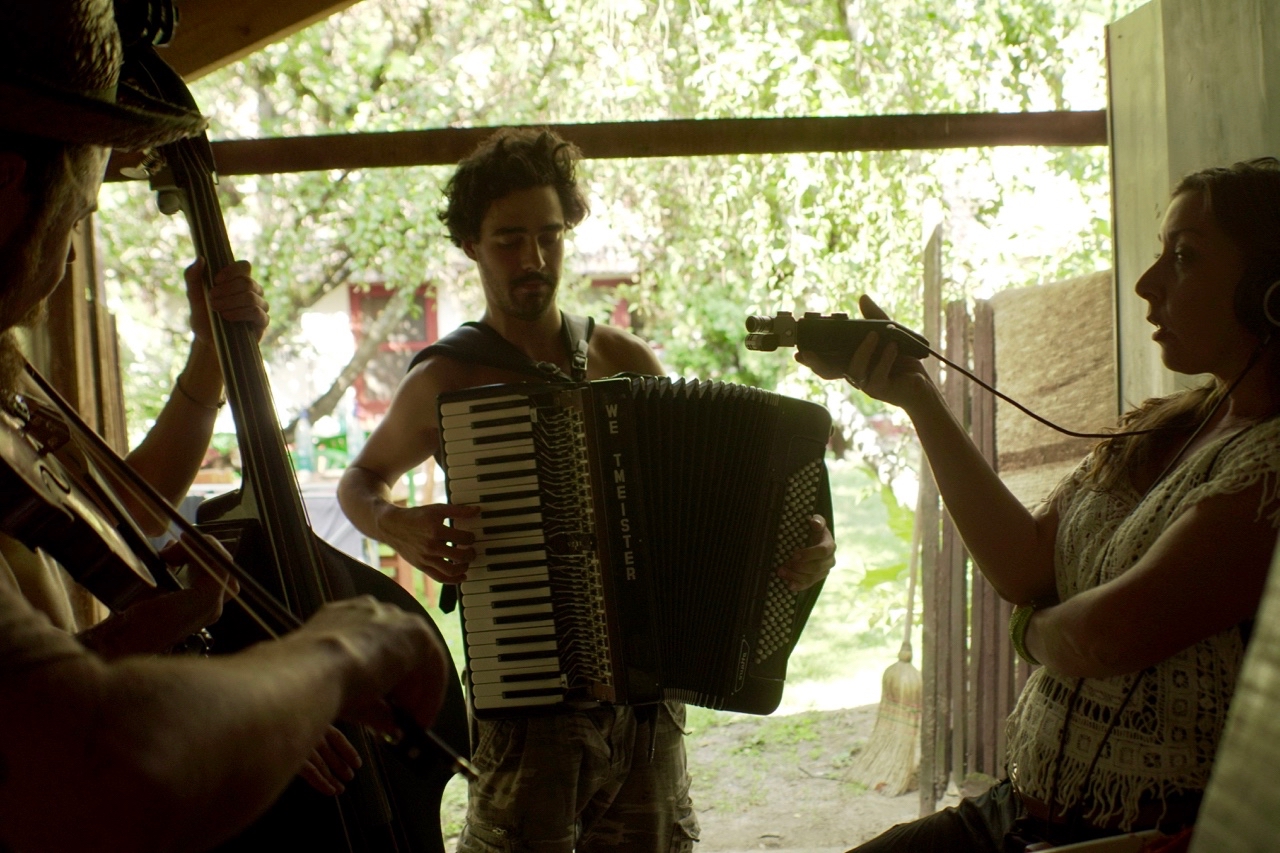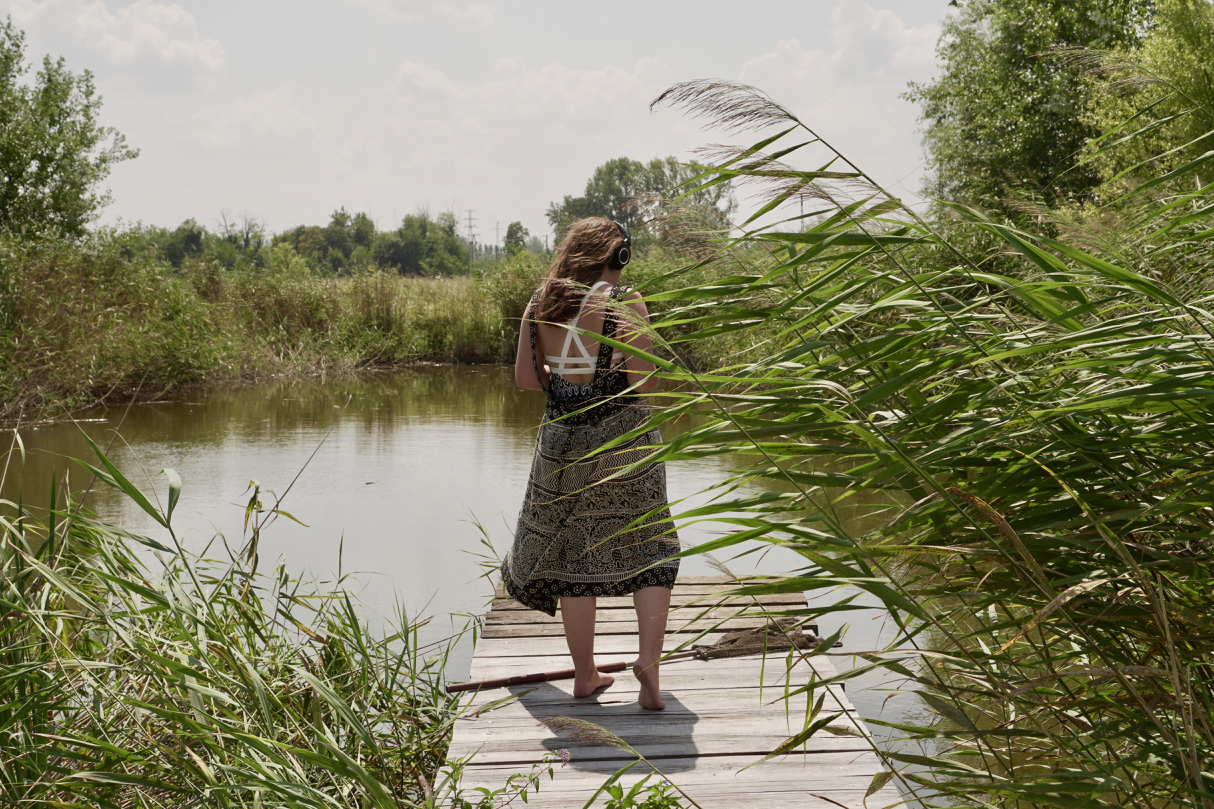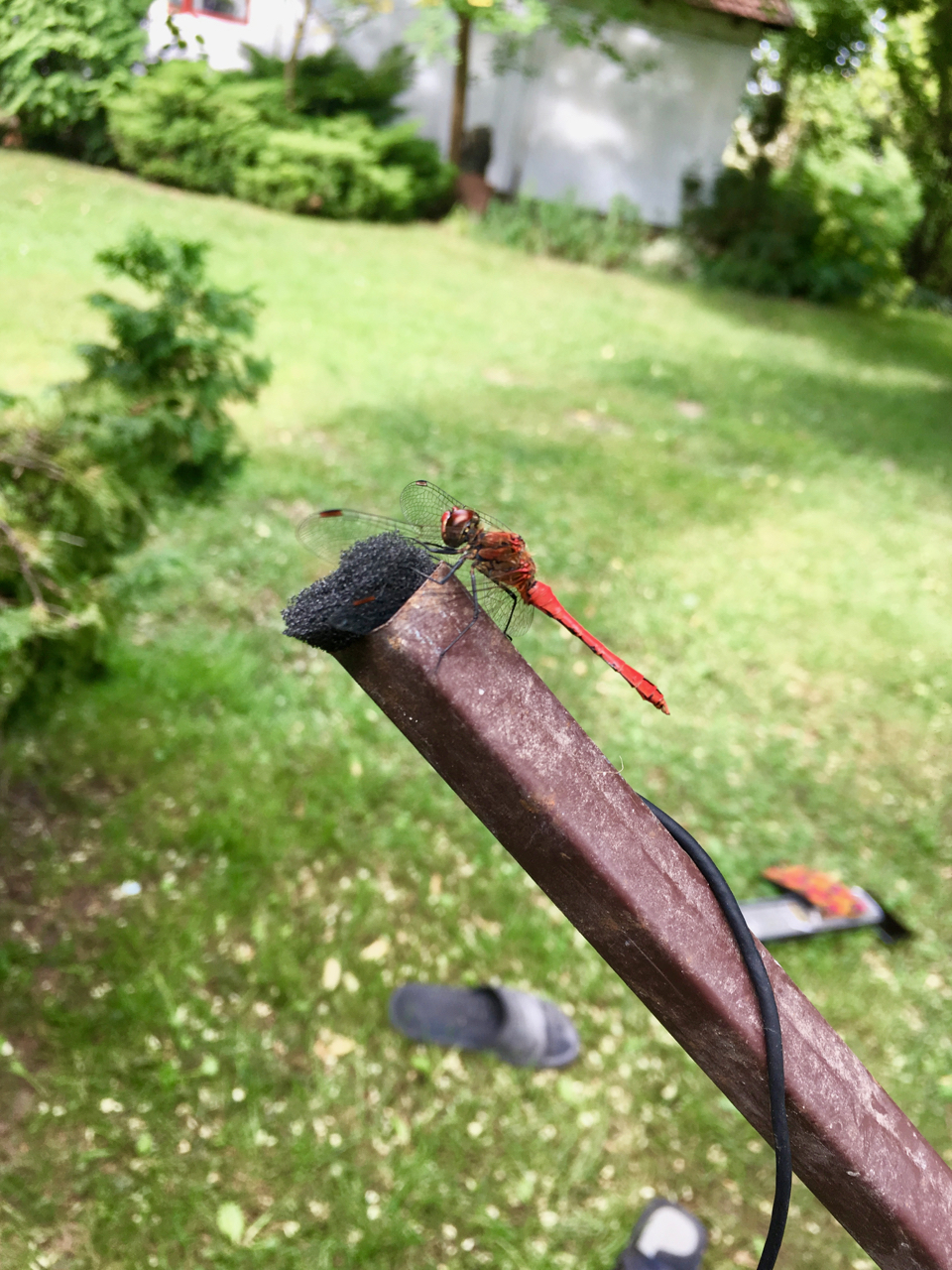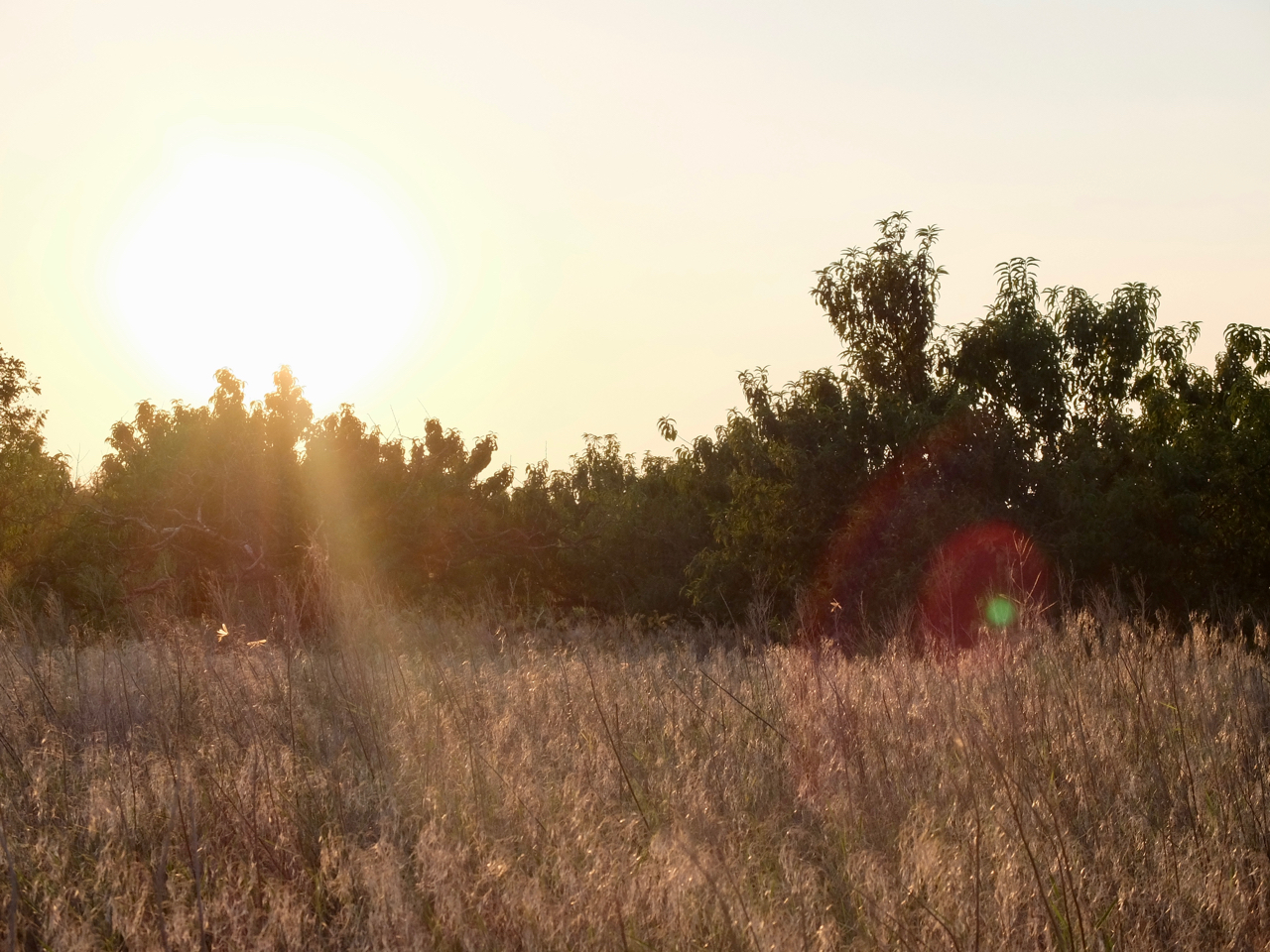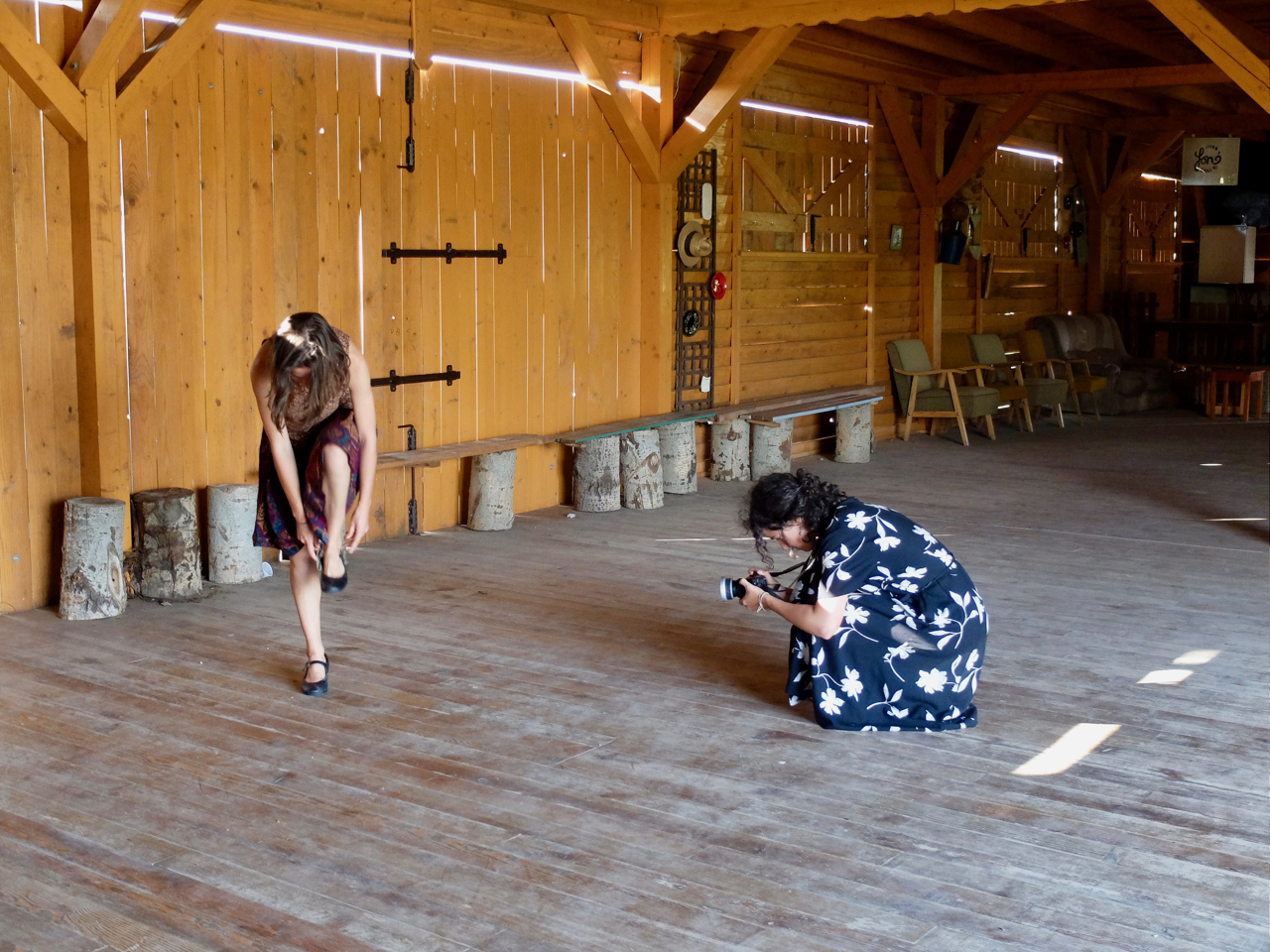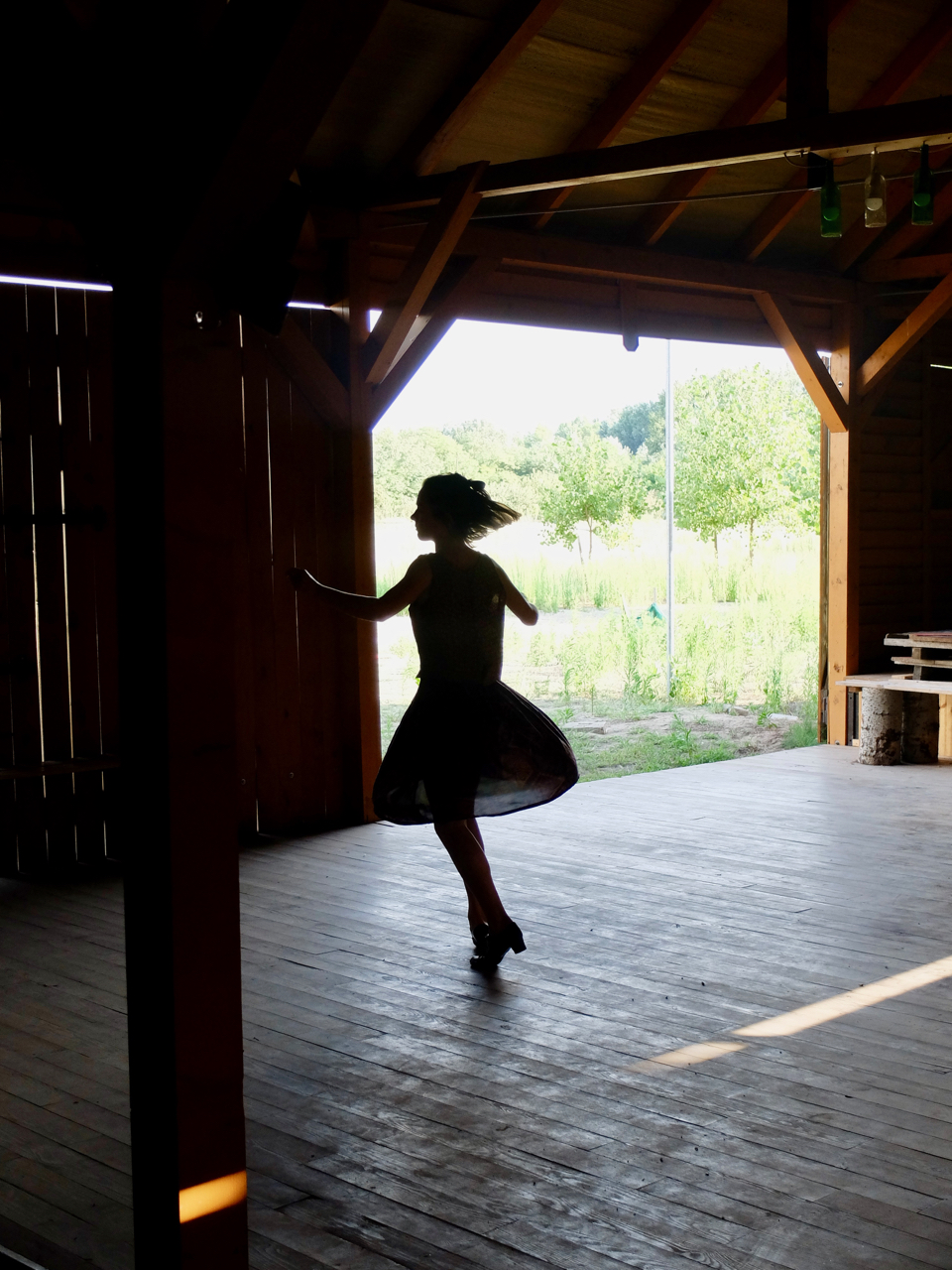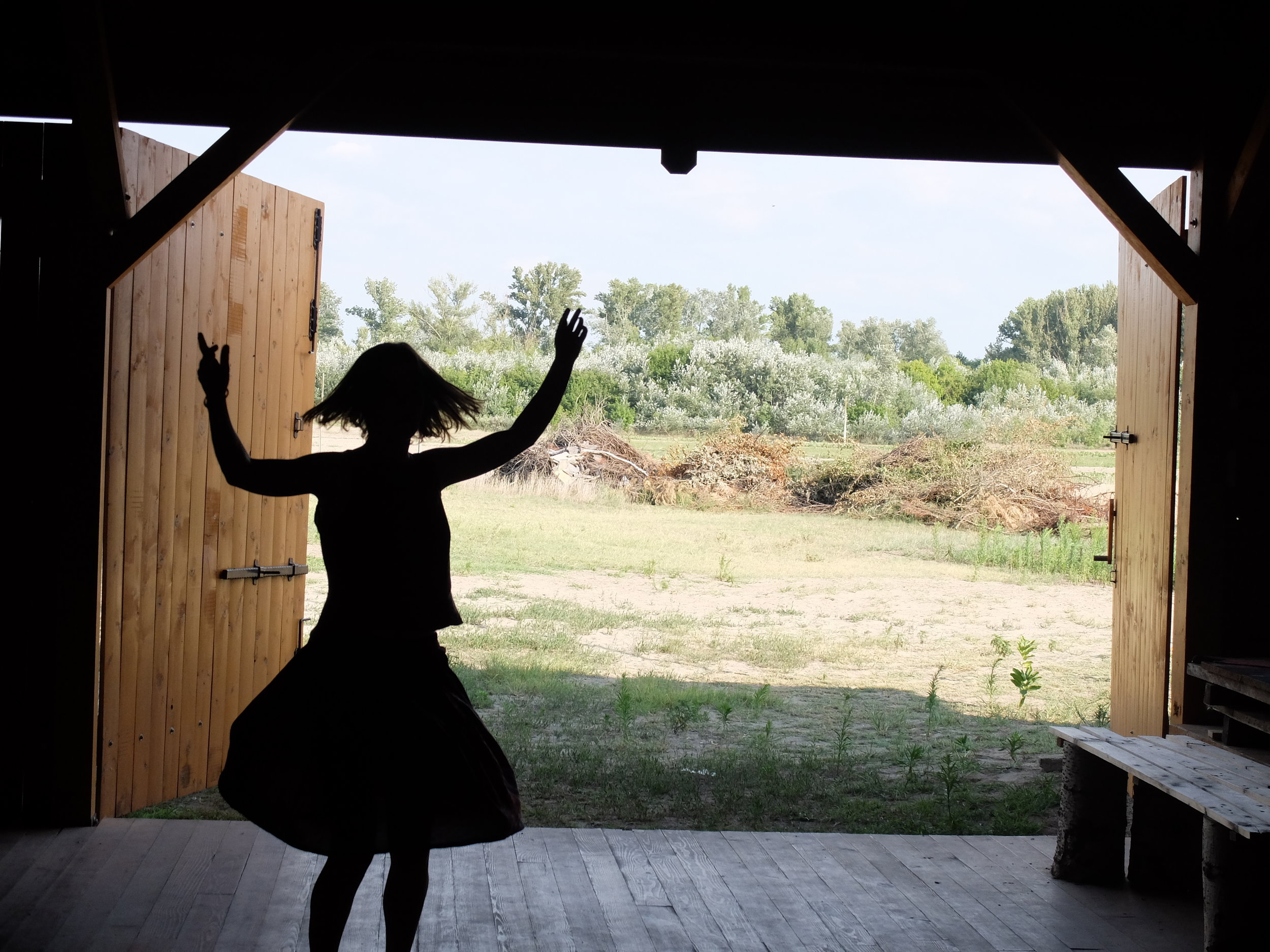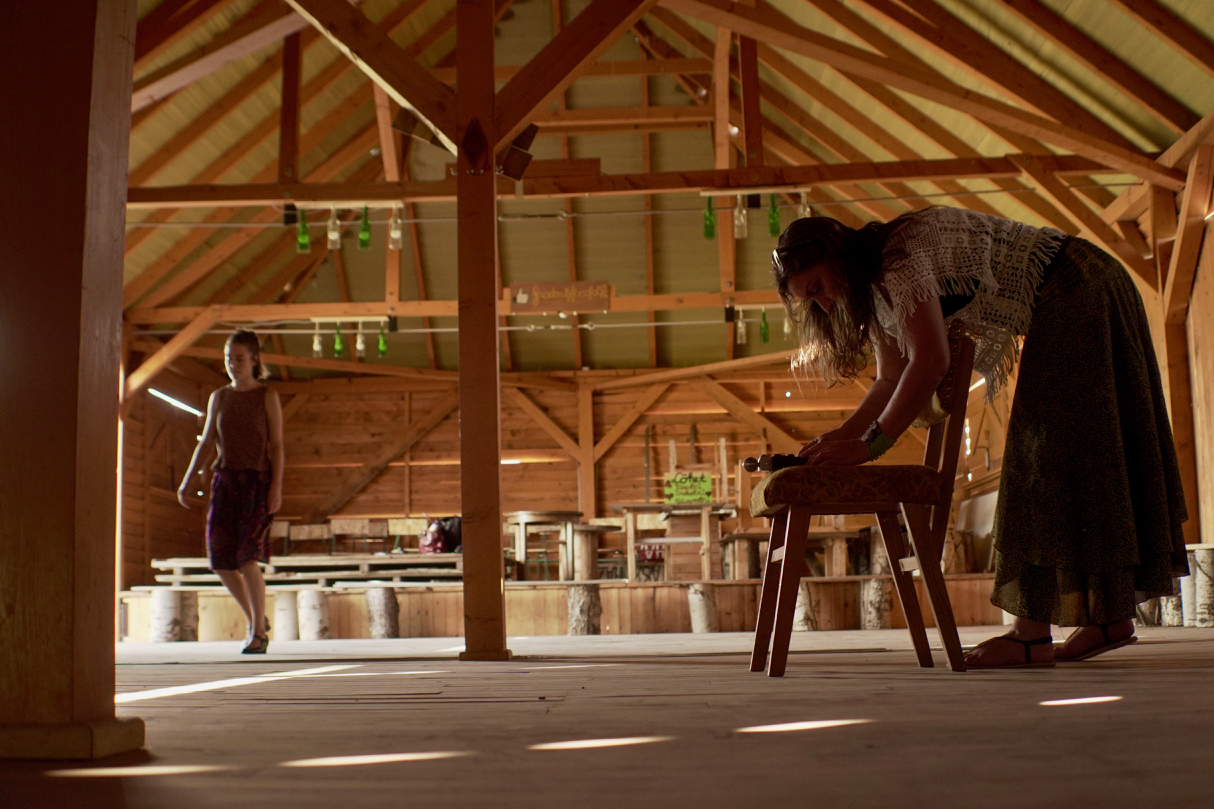6 – Field recording, Csongrád
I’ve been able to upgrade my equipment for this trip, with the support of the Australia Council. Armed with a new ZoomH6 and RØDE shotgun mic, I rove Budapest streets and hills and go out early in the morning / late at night in attempts to catch the nightingales. The ZoomH6 is a tidy little recorder and AI, and they have to a great extent dealt with the issues of capsule noise that has prevented me from buying their recorders before – I still have to carry it like a fragile egg which to someone accustomed to having a recorder strapped over my shoulder is annoying, but I feel I can move more freely.
I’ve learned that to get the best directional sounds in the 4DSOUND studio, wide stereo atmospheres need to give way to directional captures. So I’ve returned to field recording with shotgun, something I haven’t done much of recently. The stereo capsule on the Zoom is clean enough though to gather atmospheric field recordings, and my philosophy at this point is to gather everything I can, to have as many options as possible for the ‘regions’ in the room.
Ana, Katalin and I travel to Kati’s family farm in Bordány, near Szeged, the centre of the Southern Great Plain. We literally drive through a field to arrive at the farmhouse, where Kati’s mother Katalin Kisapáti sets about cooking a magnificent stew, and we engage in the warm confused smiles and laughter of those who do not speak each other’s language. Over the next couple of days in this country idyll I get up at dawn to do some literal field recording and wander in the gathering dark capturing frogs and crickets and curious birdsong. I spend a blissful couple of hours on the little lake in the early summer morning recovering myself through listening. After an intense first half of 2018, being here now is only just really sinking in. I record the lake, the dragonflies and water grasses, the distant machinery and road traffic, the wandering winds. In turn with the stereo capsules, and with the shotgun. And then I just turn everything off and listen, deeply, properly, to where I am. To now. I feel 100% present for the first time in a long time. The experiences in the 4DSOUND studio has opened my ears and the sensitivity of my body to sound. I’m pausing to listen to the world in a very clarifying way.
Recording at Katalin Kisapáti’s farm
I record three Transylvanian folk songs, played by the trio Szkojáni Charlatans / Hét Hat Club: this is Kati’s brother Bitó János, Valentin Desmarais and Kjaratan Code, who are staying on the farm rehearsing for summer gigs. I’m at this point just curious as to how music will play a part in this installation – right now I’m really not sure, but it’s a serendipitous moment to be able to record these musicians, and I will figure out the rest later … On the night after recording Irén’s story, we are all in the kitchen with the instruments, the dogs, the pálinka, the wine and the cigarettes, and the band is playing and the mood is up. I grab the Zoom and put it on the kitchen table in record, and just leave it there as the party rolls on.
We go to Irén’s house in the next town to record her story. First, we help tie up tomatoes in her wild and fertile kitchen garden. Irén has the magic hands of a gardener. The soil is sandy and grey, yet is producing all sorts of wonderful vegetables, fruits and flowers. She shows us around with great pride and picks and washes grapes for a bowl. I’ve brought her some Unicum, the herbal liqueur, and we toast each other a few times (perhaps a few times too many) before we sit down to record. With Katalin translating, we get to know each other. Irén is a beautiful, open, energetic spirit, full of the soul of music and stories. Although I cannot understand her language, I understand her. This is something to do with the universality of story and – for those of us who live with stories and work with stories all our lives – the rhythms of the story that we intrinsically share.
Recording Irén. Photo by Ana Amorós López
This first recording isn’t my greatest work let’s be honest … due to some issue with the phantom power for the RØDE. I don’t know if the microphone or the Zoom is the problem, but it’s not working, so I swap for Ana’s Zoom. Then the issue of not having a ‘dead cat’ for the microphone becomes clear as wind catches on the shotgun mic. I’m kicking myself for neglecting this … Afterwards, I need to splice the back-up recording of the Zoom’s capsule microphone in places where the shotgun recording is no good. The Zoom was resting on the ground throughout. That means that Irén’s voice changes quality significantly. She sounds distant at times, close at times. The result is that (as Paul points out) she sounds like she was recorded in the ‘60s.
In terms of sound recording and production, this is a technical failure I guess. And I have thoughts of going back to re-record her. But there is a magic to this recording that I’ve grown to love above all the others. The decision to record in the backyard of her home was deliberate. My feeling has been that I want to capture the spontaneity of storytelling, how it lives and breathes in the lives of people, in their homes and in their hearths. If I recorded all of the stories in the studio, I would have the good clear vocal to work with but what else would I miss? In this case, I’d miss the laughter of Irén as the chickens jump up on the table to eat the grapes in the bowl, distracting her from where she is in the tale. I’d miss the sense of this place, the breezes swirling down into the courtyard, the rustle of the birds around the vines and flowers. There is something about the quality of place and of time and moment that this recording captures, that I wouldn’t be able to replicate in the studio. That quality is inherent in the experience of being told a story. It’s the magic of the storyteller, of the 100% presence of being the listener. The point is, this is what is happening. This hasn’t been artificially created. We were here, and this is how it is.
I’ve always been a bit of a ‘guerilla’ sound artist, in that I’ll use whatever I capture, and I enjoy the sounds of something compelling recorded imperfectly, of found sound and archival recordings. In this period in the studio I’ve occasionally questioned my own abilities in terms of being a ‘clean’ sound recordist, perhaps feeling the pressure of creating something ‘professional’ and ‘slick’ (the imposter syndrome, naturally). Doubting this sensibility and freedom that has actually marked all of my work with something unique. I need to embrace this aspect of what I do, it’s part of the magic of what I can do.
The deal, Irén says before we record, is that she will tell her version of the dancing princesses, and then she has another story to tell me but I can’t use it in my piece, it’s too rude. Poor Katarin has to translate what turns out to be an hilarious dirty story, even more hilarious in the process of telling and translating (and after more Unicum) … And no, I won’t tell you that story now, but the Zoom was still recording so it’s a gift I’ll treasure, the rough, colourful, found sound of a joyful meeting.
Kati takes us to the dance hall out in a field near her house. It’s an airy open hall surrounded by fields populated with thistles and butterflies. She and her dance partner Vass Józsi dance five partner dances for me, and I crouch and circle them with the shotgun mic, capturing the rhythmic pounding of their feet on the floor, Józsi’s slapping of his palms on his thighs and calves. Vlad has given me two radio headphone sets, so that Kati and Józsi can dance listening to the same music, but all I’m recording is the sound of their feet. It’s a very hot and humid day and I’m feeling guilty for making them sweat through these dances, but they are both good natured about it. The dances are from regions of Dél-Alföld, Szatma’r, Vajdaszentivány, Rábaköz and Szlavónia. These recordings go really well. I’m able to follow easily with the shotgun, which records super clean and directional. The hall is beautifully quiet, with just the right amount of air around the percussive footsteps. As with the music, I’m not yet sure how I might work with these dances. The idea is to have the feet dancing around the audience – perhaps to create the illusion of 12 princesses dancing in a circle. I’m not even sure this will sound any good. But it’s all about gathering now, collecting the tools to tell the story in sound.
